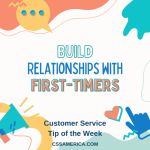Instead of renting or buying a car, why not share it? That’s the premise of Zipcar – an organization using a “Blue Ocean” strategy to build a business.
And like every business, the customer’s experience is not all about the product; the employee attitudes and process impact overall perceptions and loyalty (and $$). So an Adweek article like Zipcar’s Customer Service Gets Horrible Reviews is the last thing a growing business needs.
However, what’s most interesting about the article is what some business experts suggest that Zipcar should do to improve the experience. In response to complaints about “dirty cars, rude reps, unreturned emails, last-minute changes,” advice is given such as “how about a lighthearted phone app where customers report the quality of the car they are picking up or returning.” So customers would report the cars are dirty? We already know there are dirty cars…
How about this advice – “Customers could be alerted that Zipcar is rating them internally and that bad ratings could result in fines or having their Zipcar membership revoked.” So we penalize the customers for bad ratings? So we want to artificially increase ratings?
These bits of advice are classic of people jumping from symptom to solution (create an app and punish customers?) without giving consideration for the root cause. Zipcar needs to ask why are cars dirty, why are reps rude, why are e-mails not being returned, and why are changes done last minute? Find the root cause, and the solution becomes much more clear. The solutions will probably deal with employee hiring/training/motivation/accountability, process improvements, better tracking of documents/vehicles (and yes, customers).
When you have an issue, “There’s an app for that” is rarely the best answer.
Listen to our latest podcast episode of “Stepping Up Service” on The MESH Network at http://themesh.tv/stepping-up-service/





















